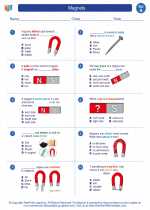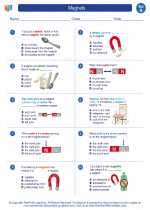Suspension Systems
A suspension system in a vehicle is a mechanism that separates the vehicle body from the wheels, allowing relative motion between the two. This system is crucial for providing a smooth and comfortable ride, as well as maintaining proper control and handling of the vehicle. The suspension system also plays a critical role in absorbing shocks from the road surface, reducing the impact of bumps and uneven terrain on the vehicle and its passengers.
Key Components of a Suspension System
The main components of a typical suspension system include:
- Shock Absorbers: These are hydraulic or pneumatic devices that help dampen the impact of bumps and reduce the bouncing motion of the vehicle.
- Springs: Springs provide support and help absorb shocks by compressing and expanding as the vehicle moves over uneven surfaces.
- Control Arms: These are sturdy metal components that connect the suspension system to the vehicle's frame or body, allowing for smooth up-and-down movement of the wheels.
- Struts: Struts are similar to shock absorbers but also act as structural support for the suspension system and may incorporate other components such as the coil spring and steering knuckle.
- Stabilizer Bar: Also known as a sway bar, this component helps to minimize body roll and stabilize the vehicle during turns or sudden maneuvers.
Importance of Suspension Systems
A well-maintained suspension system is essential for several reasons:
- Comfort: A good suspension system ensures a smooth and comfortable ride for the vehicle's occupants, reducing the impact of bumps and uneven road surfaces.
- Control and Handling: The suspension system plays a crucial role in maintaining proper control and handling of the vehicle, especially during cornering and sudden maneuvers.
- Safety: By absorbing shocks and vibrations, the suspension system contributes to the overall safety and stability of the vehicle, helping to prevent loss of control and ensuring better tire contact with the road surface.
- Longevity of Vehicle Components: A well-functioning suspension system also contributes to the longevity of other vehicle components such as tires, steering system, and chassis, by reducing the impact of road shocks and vibrations.
Study Guide
To understand the concept of suspension systems, it's important to focus on the following key areas:
- Identify and explain the main components of a suspension system, including their functions and how they work together to provide a smooth and controlled ride.
- Discuss the importance of a well-maintained suspension system for vehicle safety, comfort, and longevity of vehicle components.
- Compare and contrast different types of suspension systems used in various vehicles, such as independent suspension, solid axle suspension, and air suspension.
- Explore the role of suspension tuning and customization in enhancing vehicle performance and ride quality.
Understanding suspension systems is essential for anyone interested in automotive engineering, vehicle maintenance, or simply wanting to gain a deeper knowledge of how vehicles work.
[Suspension Systems] Related Worksheets and Study Guides:
.◂Science Worksheets and Study Guides First Grade. Magnets

 Worksheet/Answer key
Worksheet/Answer key
 Worksheet/Answer key
Worksheet/Answer key
 Worksheet/Answer key
Worksheet/Answer key
 Vocabulary/Answer key
Vocabulary/Answer key
